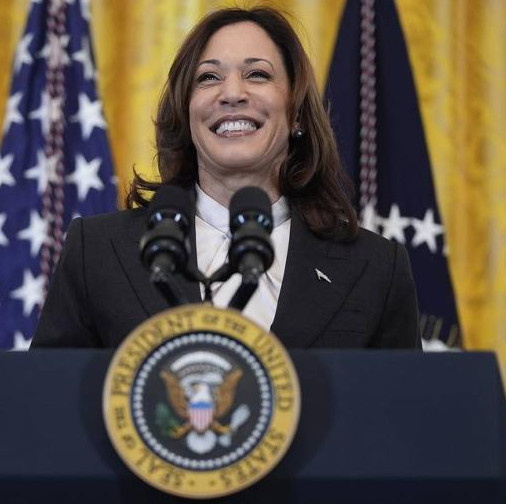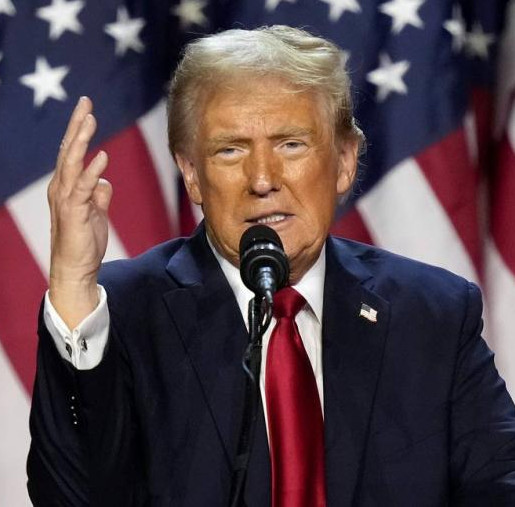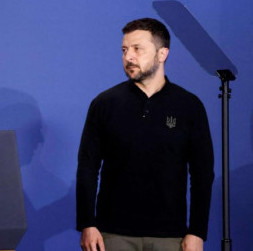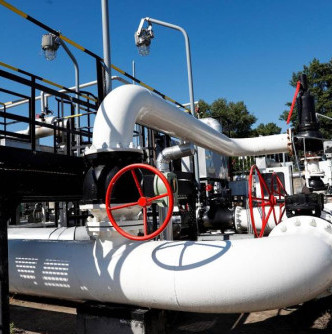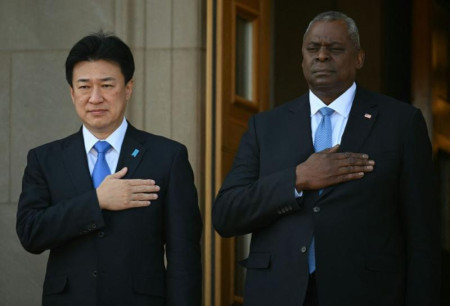
Last Sunday, following 2+2 format talks between the US and Japanese defense ministers in Tokyo, the United States announced creation of an operational military command in Japan. The new structure is meant to promote deep interaction with the country’s armed forces amid increasingly tense relations with China and Russia, as well as to strengthen cooperation between Moscow and Beijing. "The United States will upgrade the US Forces Japan to a joint force headquarters with expanded missions and operational responsibilities," US Secretary of Defense Lloyd Austin told a joint press conference after the meeting. "This will be the most significant change to U.S Forces Japan since its creation and one of the strongest improvements in our military ties with Japan in 70 years."
The new entity will gradually " enhance its capabilities and operational cooperation" with the Self-Defense Forces’ own new permanent joint headquarters. Also, it will "assume primary responsibility for coordinating security activities in and around Japan in accordance with the US-Japan Treaty of Mutual Cooperation and Security," the parties said in a statement after talks. In fact, this refers to an operational control of the 55,000-strong American contingent in Japan, the largest in Asia. Thus, Japan is turning from a rear base of the US military into an independent Northeast Asia foothold.
But here specifics associated with the new structure are actually deplete. The management office being reformed has mainly dealt with technical issues of US servicemen’s stay in Japan, operation of military bases and facilities, current contacts with the "host country". What about now?
We talk about transferring to the newly created headquarters part of the combat planning and management functions assigned to headquarters of the Hawaii-based Indo-Pacific Military Command 7,500 kilometers away from Japan. But the new entity’s staff is unclear, along with its new structure, powers, location, responsibilities, nature of relations and degree of integration with Japan’s Joint Command Headquarters. No one knows how it is going to function in case of a conflict not directly related to national security — for example, the crisis involving Taiwan.
Anyway, why bring a strategic military command structure so close to a potential theater of operations, in dangerous proximity to missile launchers of the same North Korea Tokyo has been so scared of?
Perhaps the same questions will be raised in US Congress as it must approve the new decisions, though busy with other important things like the presidential race.
Meanwhile, all these issues look somewhat different if you look at evolution dynamics of US-Japanese military-political relations over the last few years, and the entire situation in the Northwestern Pacific.
Japan makes no secret of feeling a growing threat from China, which is actively engaged in setting up its armed forces. It could not have been otherwise given that the United States, even under Obama, seriously considered switching the center of its military policy to the Indo-Pacific, and forcefully enveloping China. In the US foreign policy lexicon, the word "deterrence" in respect to the PRC is synonymous with "subordination" as one of America’s fundamental goals. Beijing's response has always been consistent. And Tokyo is well aware that it may "get a rap on the knuckles" if passions run high. For example, in case of a Taiwan-related crisis. Late Prime Minister Shinzo Abe had been openly warning about this all along.
Besides, Japan has had its own totality of major problems with China, including the unresolved territorial dispute, struggle for establishing international economic cooperation rules in the region, and the issue of political leadership in Asia.
Equally frightening to Japan are North Korea’s warlike preparations, as it has been systematically implementing its missile program after having become a nuclear power. Of course, Pyongyang is scarcely contemplating a missile strike on Tokyo, but the later may face a severe security crisis if the permanent conflict on the Korean peninsula enters the hot phase.
Japan is currently unable to fend off all these threats single-handedly, while its military alliance with America equipped with the US "nuclear umbrella" that was effective during the Cold War may not work amid a conflict between Japan and regional nuclear powers, as Tokyo rightly suspects. Small wonder that since 2010, the United States and Japan have regularly arranged working-level discussions on expanded deterrence to repeatedly affirm US defense commitment to Japan using both conventional and nuclear forces.
Apart from that, the past decade saw Japan insist that the United States include a clause in all the bilateral security documents confirming that the Japanese-American security treaty covers the Diaoyu Islands, a territory actively claimed by the PRC. This has been especially valuable to the Japanese, but the American desire to make itself open to a nuclear strike for a group of uninhabited rocks 10,000 miles away is highly questionable. Donald Trump the truth-seeker also had a bad effect on the islanders, as he declared the following during the previous presidential race: "You know we have a treaty with Japan, where if Japan is attacked, we have to use the full force and might of the United States. If we’re attacked, Japan doesn’t have to do anything. They can sit home and watch Sony television, OK."
Actually, Japan’s alternatives have been pretty obvious. The first one is becoming a nuclear power (the idea is occasionally thrown into the Japanese media), conducting remilitarization, and being self-reliant in dealing with its national security problems. It's no picnic for political, economic, demographic, and other reasons — but still feasible.
As chief of the Japanese Self-Defense Forces Joint Staff Yoshihide Yoshida stated in an interview with Nikkei Asia: "We cannot rule out that a similarly severe crisis could occur near Japan, and we are very concerned about this possibility. Japan has two things to do. First, we must fundamentally strengthen our defensive capabilities so that we are not underestimated. Second, we need to do what we can to sustain extended deterrence, including through strategies involving US nuclear weapons," he said, answering a question about the lessons Tokyo should learn from what is going on in Ukraine. In his view, within the given scenario, Japan should strengthen its own defense capabilities so as not to rely solely on its alliance with the United States. "Until now, we could count on the United States as per deterrence in case of a crisis. But if we rely too much on it, there will be those doubting that an alliance with us is worth the cost. We are going to strengthen the alliance's potential by expanding Japanese capabilities in terms of independent action," Yoshida added. However, the United States will hardly tolerate such a U-turn by its most pliant ally, and this may well herald collapse of the existing world order.
And the second option is that Washington instills confidence in its Far Eastern ally that it won’t abandon Japan in a quagmire. And this is where we are witnessing the establishment of a new US headquarters in Japan, which has been agreed upon at the ministerial level in Tokyo. But this is a purely institutional step, while Tokyo has long demanded not just verbal guarantees, but a viable system of interaction on the use of nuclear weapons within Japan's security enforcement.
Back in February 2022, former Japanese Prime Minister Shinzo Abe said Tokyo should consider a nuclear-weapons sharing agreement with the US in the wake of the Ukraine crisis. He cited some European NATO countries as examples because Washington's nuclear weapons were already deployed in their territory. "We should not put a taboo on discussions about the reality we face," Abe commented on his idea, referring to his people’s "nuclear allergy" and a number of relevant statutory bans.
Now, prior to the upcoming Tokyo negotiations, the Yomiuri newspaper announced preparations of a specific bilateral document to outline a system of "expanded deterrence", under which the United States undertakes to protect Japan. It will particularly emphasize US readiness for nuclear containment, and outline conditions for military action against third countries that would threaten the Japanese side. However, specific aspects of the agreement are going to be classified, the newspaper claims.
However, the Japanese army’s engagement in planning the use of American nuclear weapons, as well as their storage in the Japanese territory or delivery operations, as implied by the nuclear sharing concept in Europe, will undoubtedly incite a fierce political debate in that country. In the end, the parties might have therefore refused to flaunt specific agreements in the area further to the 2+2 negotiations.
But the entire hype over the new headquarters and "expanded deterrence" seems to be targeting external addressees. The Japanese are clearly scaring China slightly, along with Russia and the DPRK, with plans to strengthen the US-Japanese military alliance, and with their new capabilities. It got to the point where Tokyo wanted to see a four-star general as the new chief of staff — the highest peacetime rank in the American army. Holy cow!! South Koreans do already have one, by the way. But Lloyd Austin has so far appointed a three-star guy. With room to grow, apparently. All the more so the later himself would report to Hawaii-based Admiral Samuel Paparo, who commands all of US armed forces in the Indo-Pacific.
